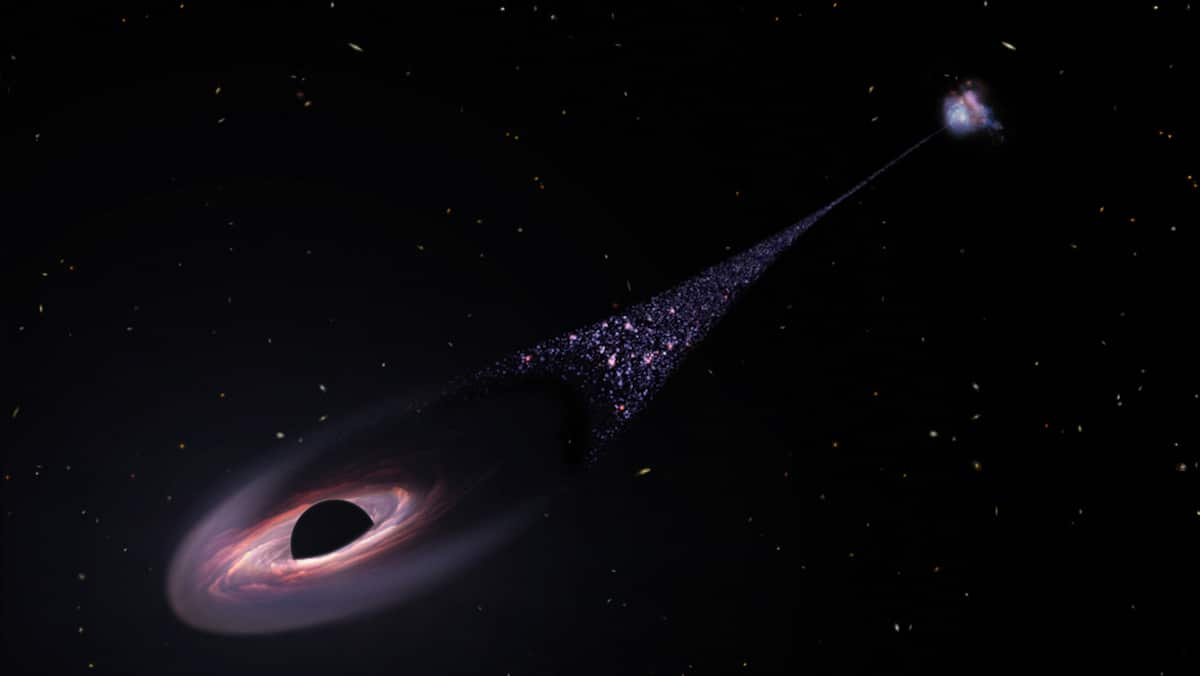
A ‘supermassive’ black hole is tearing through space at breakneck speed, leaving behind 200,000 light-years of stars, according to a groundbreaking discovery announced by NASA.
• Also read: The James Webb Telescope observes galaxies similar to the Milky Way
• Also read: James Webb unravels the mystery of a nebula around a dying star
• Also read: The first galaxies may have formed earlier than we thought
This huge monster, with a mass equivalent to 20 million times the mass of our sun, hurtles through the interstellar void and collides with the gas clouds in its path.
Given the massive forces at play, this gas then turns into a string of stars, which have been spotted by NASA’s Hubble Space Telescope.
“We think we’re seeing wakefulness behind the black hole as gas cools and can form stars,” Yale University scientist Peter van Dokkum said in a statement. “What we see are the aftereffects. Like the wake of a ship, we see the aftermath of a black hole.
The researchers believe that the gas likely heated up due to the collision with the black hole, and then cooled after passing through, causing stars to appear in its path.
According to van Dokkum, “the gas in front of it is being hit by the supersonic, high-velocity impact of the black hole.”
Scientists believe that the celestial beast came from an interstellar trio.
According to their theory, two galaxies may have merged about 50 million years ago, causing two supermassive black holes to orbit each other.
But a third galaxy, with its own black hole, will then collide with this cluster. Enough to create an unstable, chaotic trio, which ends up ejecting one of the black holes at breakneck speed: The monster spotted by Hubble can travel the distance between Earth and the Moon in just 14 minutes.
For us poor mortals, there is no danger of it being swallowed up by this huge celestial body, according to the researchers responsible for the discovery. All this happened in space a long time ago, when the universe was half its current age.
We see this phenomenon today because it took so long for light to reach us.
The discovery was made by chance, according to Mr. Van Dokkum.
Using the Hubble telescope, the scientist (…) noticed a small trail of stars, “very, very, very bright and very unusual.” “It was like nothing we’ve seen before.”
Never seen before, this type of black hole may not be alone in the universe, according to NASA.
The new Nancy Grace Roman Telescope, due to be launched this decade, should provide a broader view of space, and may discover more star trails that indicate the presence of one of these giant stars.





